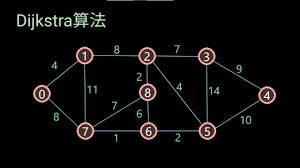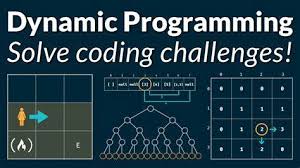自诚明,谓之性;自明诚,谓之教。诚则明矣,明则诚矣。
第四章 数论 一、 质数 定义 : 在大于1的整数中,如果质包含1和本身这两个约数,就被称为质数 或者素数
(1)质数的判定:试除法 O(sqrt(n))
1 2 3 4 5 6 7 8 9 bool is_prime (int n) if (n<2 ) return false ; for (int i = 2 ;i <= n / i;i++) { if (n % i == 0 ) return false ; } return true ; }
(2)分解质因数:试除法 最坏O(sqrt(n))
性质:n中最多只包含一个大于sqrt(n)的质因子
1 2 3 4 5 6 7 8 9 10 11 12 13 void divide (int x) for (int i = 2 ;i <= x/i; i ++) { if (x % i == 0 ) { int s = 0 ; while (x % i == 0 ) x /= i,s++; cout<<i<<' ' <<s<<endl; } } if (x > 1 ) cout<<x<<' ' <<1 <<endl; }
(3)朴素筛法求素数 O(loglog(n))
1 2 3 4 5 6 7 8 9 10 11 12 13 int primes[N], cnt; bool st[N]; void get_primes (int n) for (int i = 2 ; i <= n; i ++ ) { if (st[i]) continue ; primes[cnt ++ ] = i; for (int j = i + i; j <= n; j += i) st[j] = true ; } }
(4)线性筛法求素数 O(n)
1 2 3 4 5 6 7 8 9 10 11 12 13 14 15 int primes[N], cnt; bool st[N]; void get_primes (int n) for (int i = 2 ; i <= n; i ++ ) { if (!st[i]) primes[cnt ++ ] = i; for (int j = 0 ; primes[j] <= n / i; j ++ ) { st[primes[j] * i] = true ; if (i % primes[j] == 0 ) break ; } } }
注:朴素筛法会出现一个数被重复筛,而线性筛法不会重复筛
二、约数 (1)试除法求所有约数
1 2 3 4 5 6 7 8 9 10 11 12 vector<int > get_divisors (int x) vector<int > res; for (int i = 1 ; i <= x / i; i ++ ) if (x % i == 0 ) { res.push_back (i); if (i != x / i) res.push_back (x / i); } sort (res.begin (), res.end ()); return res; }
补充:对 二维 vector<int> 中第二个元素进行排序
1 2 3 4 5 static bool cmp (const vector<int >& a,const vector<int >& b) return a.back () < b.back (); } sort (points.begin (),points.end (),cmp);
(2)约数个数 & 约数之和
1 2 3 如果 N = p1^c1 * p2^c2 * ... *pk^ck 约数个数: (c1 + 1) * (c2 + 1) * ... * (ck + 1) 约数之和: (p1^0 + p1^1 + ... + p1^c1) * ... * (pk^0 + pk^1 + ... + pk^ck)
(3)最大公约数 (辗转相除法)
核心 (a,b)= (b,a mod b)
证明:
首先易得 d|a , d|b 则d|ax + by
先证左边的公约数都是右边的公约数:已知 d = (a,b) => d|a , d|b , 又a mod b = a - [a/b]*b (下取整) <=>
a mod b = a - cb , 显然d|a - cb , 所以d|b 且 d|a mod b
后证右边的公约数都是左边的公约数:已知 d|b , d|a mod b , 即d|a - cb => d|a - cb + cb =>d|a , 所以
d|a 且 d|b
1 2 3 4 int gcd (int a, int b) return b ? gcd (b, a % b) : a; }
三、欧拉函数 定义:
欧拉函数 给定 n 个正整数 ai,请你求出每个数的欧拉函数。
输入格式 第一行包含整数 n。
接下来 n 行,每行包含一个正整数 ai。
输出格式 输出共 n 行,每行输出一个正整数 ai 的欧拉函数。
数据范围 1 ≤ n ≤ 100,
输入样例: 输出样例: 1 2 3 4 5 6 7 8 9 10 11 12 13 14 15 16 17 18 19 20 21 22 23 24 #include <iostream> using namespace std;int main () int n; cin>>n; int x; while (n--) { cin>>x; int res=x; for (int i=2 ;i<=x/i;i++) { if (x%i==0 ) { res = res/i*(i-1 ); while (x%i==0 ) x/=i; } } if (x>1 ) res = res/x*(x-1 ); cout<<res<<endl; } return 0 ; }
筛法求欧拉函数 给定一个正整数 n,求 1∼n 中每个数的欧拉函数之和。
输入格式 共一行,包含一个整数 n。
输出格式 共一行,包含一个整数,表示 1∼n 中每个数的欧拉函数之和。
数据范围 1 ≤ n ≤ 10^6
输入样例: 输出样例: 1 2 3 4 5 6 7 8 9 10 11 12 13 14 15 16 17 18 19 20 21 22 23 24 25 26 27 28 29 30 31 32 33 34 35 #include <iostream> #include <algorithm> using namespace std;const int N=1000010 ;int p[N],cnt,phi[N];int n,st[N];long long get_eulers (int x) long long res=0 ; phi[1 ]=1 ; for (int i=2 ;i<=x;i++){ if (!st[i]) { p[cnt++]=i; phi[i]=i-1 ; } for (int j=0 ;p[j]<=x/i;j++){ st[p[j]*i]=true ; if (i%p[j]==0 ){ phi[p[j]*i]=p[j]*phi[i]; break ; } else phi[p[j]*i]=(p[j]-1 )*phi[i]; } } for (int i=1 ;i<=n;i++) res+=phi[i]; return res; } int main () cin>>n; cout<<get_eulers (n)<<endl; return 0 ; }
四、快速幂 快速幂 给定 n 组 ai,bi,pi,对于每组数据,求出 abiimodpi 的值。
输入格式 第一行包含整数 nn。
接下来 nn 行,每行包含三个整数 ai,bi,pi。
输出格式 对于每组数据,输出一个结果,表示 ai^bi mod pi 的值。
每个结果占一行。
数据范围 1 ≤ n ≤ 100000,
输入样例: 输出样例: 1 2 3 4 5 6 7 8 9 10 11 12 13 14 15 16 17 18 19 20 21 22 23 24 25 26 #include <iostream> #include <algorithm> using namespace std;typedef long long LL;LL qmi (int a,int k,int p) { int res=1 ; while (k){ if (k&1 ) res=(LL)res*a%p; k>>=1 ; a=(LL)a*a%p; } return res; } int main () int n; cin>>n; while (n--){ int a,k,p; cin>>a>>k>>p; cout<<qmi (a,k,p)<<endl; } return 0 ; }
快速幂求逆元 1 2 3 4 5 6 7 8 9 10 11 12 13 14 15 16 17 18 19 20 21 22 23 24 25 26 27 #include <iostream> #include <algorithm> using namespace std;typedef long long LL;LL qmi (int a,int k,int p) { int res=1 ; while (k){ if (k&1 ) res=(LL)res*a%p; k>>=1 ; a=(LL)a*a%p; } return res; } int main () int n; cin>>n; while (n--){ int a,p; cin>>a>>p; if (a%p) cout<<qmi (a,p-2 ,p)<<endl; else puts ("impossible" ); } return 0 ; }
五、扩展欧几里得算法
裴蜀定理:设a, b是不全为零的整数,则存在整数x, y,使得 ax + by = gcd(a, b)
扩展欧几里得算法 1 2 3 4 5 6 7 8 9 10 11 12 13 14 15 16 17 18 19 20 21 22 23 24 25 26 #include <iostream> using namespace std;void exgcd (int a,int b,int &x,int &y) if (!b){ x=1 ; y=0 ; } else { exgcd (b,a%b,y,x); y-=a/b*x; } } int main () int n; cin>>n; while (n--){ int a,b; int x,y; cin>>a>>b; exgcd (a,b,x,y); cout<<x<<' ' <<y<<endl; } return 0 ; }
倘若要求解d:
1 2 3 4 5 6 7 8 9 10 int exgcd (int a,int b,int &x,int &y) if (!b){ x=1 ; y=0 ; return a; } int d = exgcd (b,a%b,y,x); y-=a/b*x; return d; }
线性同余方程 1 2 3 4 5 6 7 8 9 10 11 12 13 14 15 16 17 18 19 20 21 22 23 24 25 26 27 #include <iostream> using namespace std;int exgcd (int a,int b,int &x,int &y) if (!b) { x=1 ; y=0 ; return a; } int d=exgcd (b,a%b,y,x); y-=a/b*x; return d; } int main () int n; cin>>n; while (n--){ int a,b,m; cin>>a>>b>>m; int x,y; int d=exgcd (a,m,x,y); if (b%d) puts ("impossible" ); else cout<<(long long )x*(b/d)%m<<endl; } return 0 ; }
六、中国剩余定理 表达整数的奇怪方式 1 2 3 4 5 6 7 8 9 10 11 12 13 14 15 16 17 18 19 20 21 22 23 24 25 26 27 28 29 30 31 32 33 34 35 36 37 38 39 40 41 42 43 44 #include <iostream> #include <algorithm> #include <cmath> using namespace std;typedef long long LL;LL exgcd (LL a,LL b,LL &x,LL &y) { if (!b) { x=1 ; y=0 ; return a; } int d=exgcd (b,a%b,y,x); y-=a/b*x; return d; } int main () int n; cin>>n; LL a1,m1; cin>>a1>>m1; bool has_answer=true ; for (int i=0 ;i<n-1 ;i++){ LL a2,m2; cin>>a2>>m2; LL k1,k2; LL d=exgcd (a1,a2,k1,k2); if ((m2-m1)%d){ has_answer=false ; break ; } k1*=(m2-m1)/d; LL t=a2/d; k1=(k1%t+t)%t; m1=m1+a1*k1; a1=a1/d*a2; } if (has_answer) cout<<(m1%a1+a1)%a1<<endl; else puts ("-1" ); return 0 ; }
七、高斯消元 高斯消元解线性方程组
高斯消元:
枚举每一列 c:
找到绝对值最大的一行
将该行换到最上面
将该行第一个数变成1
将改行下面所有行的第 c 列消成0
若最后有唯一解,则将原系数矩阵化为单位矩阵,第 n+1列即为解
1 2 3 4 5 6 7 8 9 10 11 12 13 14 15 16 17 18 19 20 21 22 23 24 25 26 27 28 29 30 31 32 33 34 35 36 37 38 39 40 41 42 43 44 45 46 47 48 49 50 51 52 53 54 55 56 57 58 59 #include <iostream> #include <algorithm> #include <cmath> using namespace std;const int N=110 ;const double eps = 1e-8 ;int n;double a[N][N];int gauss () int c,r; for (c=0 ,r=0 ;c<n;c++){ int t=r; for (int i=r;i<n;i++) { if (fabs (a[i][c])>fabs (a[t][c])) t=i; } if (fabs (a[t][c])<eps) continue ; for (int i=c;i<=n;i++) swap (a[t][i],a[r][i]); for (int i=n;i>=c;i--) a[r][i]/=a[r][c]; for (int i=r+1 ;i<n;i++) if (fabs (a[i][c])>eps){ for (int j=n;j>=c;j--){ a[i][j]-=a[r][j]*a[i][c]; } } r++; } if (r<n){ for (int i=r;i<n;i++) if (fabs (a[i][n])>eps) return 0 ; return 2 ; } for (int i=n-1 ;i>=0 ;i--) for (int j=i+1 ;j<n;j++) a[i][n]-=a[i][j]*a[j][n]; return 1 ; } int main () cin>>n; for (int i=0 ;i<n;i++) for (int j=0 ;j<=n;j++) cin>>a[i][j]; int t=gauss (); if (t==2 ) puts ("Infinite group solutions" ); else if (t==1 ){ for (int i=0 ;i<n;i++) { if (fabs (a[i][n])<eps) a[i][n]=0 ; printf ("%.2lf\n" ,a[i][n]); } } else puts ("No solution" ); return 0 ; }
高斯消元解异或线性方程组 1 2 3 4 5 6 7 8 9 10 11 12 13 14 15 16 17 18 19 20 21 22 23 24 25 26 27 28 29 30 31 32 33 34 35 36 37 38 39 40 41 42 43 44 45 46 47 48 49 50 51 52 53 54 55 56 57 58 59 #include <iostream> using namespace std;const int N=110 ;int a[N][N],n;int gauss () int r,c; for (r=c=0 ;c<n;c++){ int t=r; for (int i=r;i<n;i++){ if (a[i][c]){ t=i; break ; } } if (!a[t][c]) continue ; for (int i=c;i<n+1 ;i++) swap (a[r][i],a[t][i]); for (int i=r+1 ;i<n;i++){ if (a[i][c]){ for (int j=c;j<n+1 ;j++) a[i][j]^=a[r][j]; } } r++; } if (r<n){ for (int i=r;i<n;i++) if (a[i][n]) return 2 ; return 1 ; } for (int i=n-1 ;i>=0 ;i--) { for (int j=i+1 ;j<n+1 ;j++){ if (a[i][j]) a[i][n]^=a[j][n]; } } return 0 ; } int main () cin>>n; for (int i=0 ;i<n;i++){ for (int j=0 ;j<n+1 ;j++){ cin>>a[i][j]; } } int t=gauss (); if (t==1 ) puts ("Multiple sets of solutions" ); else if (t==2 ) puts ("No solution" ); else { for (int i=0 ;i<n;i++) cout<<a[i][n]<<endl; } return 0 ; }
八、求组合数 求组合数 I 1 2 3 4 5 6 7 8 9 10 11 12 13 14 15 16 17 18 19 20 21 #include <iostream> using namespace std;const int N = 2010 , mod = 1e9 +7 ;int c[N][N];int main () int n; cin>>n; for (int i=0 ;i<N;i++) for (int j=0 ;j<=i;j++) if (!j) c[i][j]=1 ; else c[i][j]=(c[i-1 ][j]+c[i-1 ][j-1 ])%mod; for (int i=0 ;i<n;i++) int a,b; cin>>a>>b; cout<<c[a][b]<<endl; } return 0 ; }
求组合数 II 1 2 3 4 5 6 7 8 9 10 11 12 13 14 15 16 17 18 19 20 21 22 23 24 25 26 27 28 29 30 31 32 33 34 35 #include <iostream> using namespace std;const int N=100010 ,mod=1e9 +7 ;typedef long long LL;int fact[N],infact[N];int qmi (int a,int k,int p) int res=1 ; while (k){ if (k&1 ) res=(LL)res*a%p; a=(LL)a*a%p; k>>=1 ; } return res; } int main () int n; cin>>n; fact[0 ]=infact[0 ]=1 ; for (int i=1 ;i<N;i++) { fact[i]=(LL)fact[i-1 ]*i%mod; infact[i]=(LL)infact[i-1 ]*qmi (i,mod-2 ,mod)%mod; } for (int i=0 ;i<n;i++){ int a,b; cin>>a>>b; cout<<(LL)fact[a]*infact[a-b]%mod*infact[b]%mod<<endl; } return 0 ; }
求组合数 III 1 2 3 4 5 6 7 8 9 10 11 12 13 14 15 16 17 18 19 20 21 22 23 24 25 26 27 28 29 30 31 32 33 34 35 36 37 38 39 40 #include <iostream> using namespace std;typedef long long LL;int qmi (int a,int k,int p) int res=1 ; while (k){ if (k&1 ) res=(LL)res*a%p; a=(LL)a*a%p; k>>=1 ; } return res; } int C (int a,int b,int p) if (!b) return 1 ; int res=1 ; for (int i=1 ,j=a;i<=b;i++,j--){ res=(LL)res*j%p; res=(LL)res*qmi (i,p-2 ,p)%p; } return res; } int lucas (LL a,LL b,int p) if (a<p && b<p) return C (a,b,p); return (LL)C (a%p,b%p,p)*lucas (a/p,b/p,p)%p; } int main () int n; cin>>n; while (n--){ LL a,b; int p; cin>>a>>b>>p; cout<<lucas (a,b,p)<<endl; } return 0 ; }
求组合数 IV 适用于结果很大,没有取模时
1 2 3 4 5 6 7 8 9 10 11 12 13 14 15 16 17 18 19 20 21 22 23 24 25 26 27 28 29 30 31 32 33 34 35 36 37 38 39 40 41 42 43 44 45 46 47 48 49 50 51 52 53 54 55 56 57 58 59 60 61 62 63 64 65 66 67 68 #include <iostream> #include <vector> #include <algorithm> using namespace std;typedef long long LL;const int N=5010 ;int primes[N],cnt;int st[N];int sum[N];void get_primes (int n) for (int i=2 ;i<=n;i++){ if (!st[i]) primes[cnt++]=i; for (int j=0 ;primes[j]<=n/i;j++){ st[primes[j]*i]=true ; if (i%primes[j]==0 ) break ; } } } int get (int a,int p) int res=0 ; while (a){ res+=a/p; a/=p; } return res; } vector<int > mul (vector<int > &A,int b) { vector<int > C; int t=0 ; for (int i=0 ;i<A.size ();i++){ t+=A[i]*b; C.push_back (t%10 ); t/=10 ; } while (t){ C.push_back (t%10 ); t/=10 ; } return C; } int main () int a,b; cin>>a>>b; get_primes (a); for (int i=0 ;i<cnt;i++){ int p=primes[i]; sum[i]=get (a,p)-get (b,p)-get (a-b,p); } vector<int > C; C.push_back (1 ); for (int i=0 ;i<cnt;i++){ for (int j=0 ;j<sum[i];j++){ C = mul (C,primes[i]); } } for (int i=C.size ()-1 ;i>=0 ;i--) cout<<C[i]; return 0 ; }
卡特兰数 满足条件的01序列 给定 n 个 0 和 n 个 1,它们将按照某种顺序排成长度为 2n 的序列,求它们能排列成的所有序列中,能够满足任意前缀序列中 0 的个数都不少于 1 的个数的序列有多少个。
输出的答案对 10^9+7 取模。
输入格式 共一行,包含整数 n。
输出格式 共一行,包含一个整数,表示答案。
数据范围 1 ≤ n ≤ 10^5
输入样例: 输出样例:
1 2 3 4 5 6 7 8 9 10 11 12 13 14 15 16 17 18 19 20 21 22 23 24 25 26 27 28 29 30 #include <iostream> using namespace std;typedef long long LL;const int mod=1e9 +7 ;int qmi (int a,int k,int p) int res=1 ; while (k){ if (k&1 ) res=(LL)res*a%p; a=(LL)a*a%p; k>>=1 ; } return res; } int main () int n; cin>>n; int a=2 *n,b=n; int res=1 ; for (int i=1 ,j=a;i<=b;i++,j--){ res=(LL)res*j%mod; res=(LL)res*qmi (i,mod-2 ,mod)%mod; } res=(LL)res*qmi (n+1 ,mod-2 ,mod)%mod; cout<<res<<endl; return 0 ; }
九、容斥原理 能被整除的数 1 2 3 4 5 6 7 8 9 10 11 12 13 14 15 16 17 18 19 20 21 22 23 24 25 26 27 28 29 30 31 32 33 34 35 36 37 38 #include <iostream> using namespace std;typedef long long LL;const int N = 20 ;int p[N], n, m;int main () cin >> n >> m; for (int i = 0 ; i < m; i++) cin >> p[i]; int res = 0 ; for (int i = 1 ; i < 1 << m; i++) { int t = 1 ; int s = 0 ; for (int j = 0 ; j < m; j++){ if (i >> j & 1 ){ if ((LL)t * p[j] > n){ t = -1 ; break ; } s++; t *= p[j]; } } if (t == -1 ) continue ; if (s & 1 ) res += n / t; else res -= n / t; } cout << res << endl; return 0 ; }
十、博弈论 Nim游戏
1 2 3 4 5 6 7 8 9 10 11 12 13 14 15 16 #include <iostream> using namespace std;int n;int main () cin>>n; int res=0 ; while (n--){ int x; cin>>x; res^=x; } if (res) puts ("Yes" ); else puts ("No" ); return 0 ; }
台阶-Nim游戏 1 2 3 4 5 6 7 8 9 10 11 12 13 14 15 #include <iostream> using namespace std;int main () int n; cin>>n; int res=0 ; for (int i=1 ;i<=n;i++){ int x; cin>>x; if (i&1 ) res^=x; } if (res) puts ("Yes" ); else puts ("No" ); return 0 ; }
集合-Nim游戏
参考题解:https://www.acwing.com/solution/content/23435/
1 2 3 4 5 6 7 8 9 10 11 12 13 14 15 16 17 18 19 20 21 22 23 24 25 26 27 28 29 30 31 32 33 34 35 36 37 38 39 40 41 42 43 44 45 46 47 48 49 50 51 52 53 #include <iostream> #include <cstring> #include <algorithm> #include <set> using namespace std;const int N=110 ,M=10010 ;int n,m;int f[M],s[N];int sg (int x) if (f[x]!=-1 ) return f[x]; set<int > S; for (int i=0 ;i<m;i++) { int sum=s[i]; if (x>=sum) S.insert (sg (x-sum)); } for (int i=0 ;;i++) if (!S.count (i)) return f[x]=i; } int main () cin>>m; for (int i=0 ;i<m;i++) cin>>s[i]; cin>>n; memset (f,-1 ,sizeof (f)); int res=0 ; for (int i=0 ;i<n;i++) { int x; cin>>x; res^=sg (x); } if (res) printf ("Yes" ); else printf ("No" ); return 0 ; }
拆分-Nim游戏 1 2 3 4 5 6 7 8 9 10 11 12 13 14 15 16 17 18 19 20 21 22 23 24 25 26 27 28 29 30 31 32 33 34 35 36 37 38 39 #include <iostream> #include <cstring> #include <set> using namespace std;const int N=110 ;int f[N],n;int sg (int x) if (f[x]!=-1 ) return f[x]; set<int > S; for (int i=0 ;i<x;i++){ for (int j=0 ;j<=i;j++){ S.insert (sg (i)^sg (j)); } } for (int i=0 ; ; i++){ if (!S.count (i)){ f[x]=i; return f[x]; } } } int main () cin>>n; int res=0 ; memset (f,-1 ,sizeof f); for (int i=0 ;i<n;i++){ int x; cin>>x; res^=sg (x); } if (res) puts ("Yes" ); else puts ("No" ); return 0 ; }











































